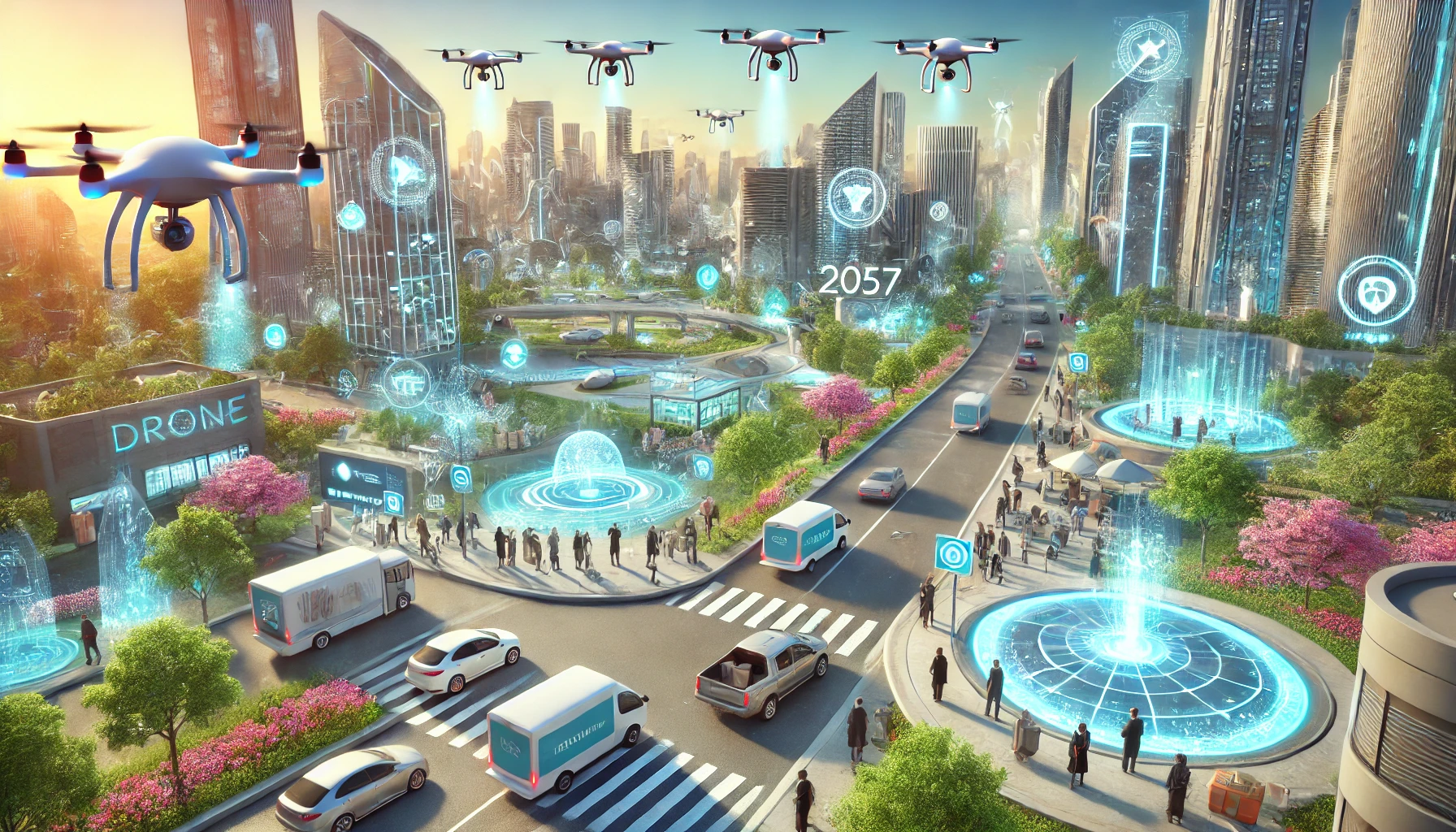Drones in 2057: Ensuring Equitable Integration through Anticipatory Governance
Drones are expected to be widely integrated into daily life by 2057, performing advanced tasks from transport to healthcare, and presenting both positive and negative impacts. The study highlights the need for anticipatory governance to balance innovation with regulation for sustainable and equitable drone use.

In the year 2057, drones are expected to become a ubiquitous part of society, transforming daily life in ways that were once unimaginable. This future vision is drawn from a study conducted by Marianne Harbo Frederiksen, Patricia Wolf, and Ute Klotz, which aimed to inform policy decision-makers at both governmental and corporate levels about the potential impacts and uses of drones. The study included narratives from 135 Danish citizens, ranging from drone novices to experts, who envisioned a future deeply integrated with drone technology.
Advanced Capabilities and New Roles for Drones
These narratives reveal a future where drones possess advanced motor and cognitive skills, allowing them to perform tasks traditionally carried out by humans. They envision drones that can transform into various forms, create instant holograms, and even offer psychological counseling. This highlights the dual nature of drones, presenting both beneficial and potentially disruptive impacts. Drones are anticipated to play a significant role in transportation, delivering goods, providing personal transportation, and even acting as mobile shelters. They could assist in personal shopping, guide and rescue individuals, serve customers, and substitute human labor in domestic and professional settings. In public services, drones might maintain public spaces, monitor the environment, enforce laws, and provide emergency healthcare.
Exploring Human-Drone Relationships
Moreover, the potential for drones to replace human relationships is explored, with concepts like companion drones and drones involved in intimate interactions. However, there are also darker uses envisioned, such as drones facilitating harassment, supporting criminal activities, and engaging in remote warfare. These stories, while speculative, provide nuanced perspectives on the potential of implementing drones and showcase the often opposing nature of the envisioned impacts.
Navigating the Complexities of Drone Integration
The study emphasizes the need for anticipatory governance, where policy decision-makers must navigate the paradoxes of drone technology. This involves balancing the promotion of innovative uses with the regulation of potentially harmful applications. The citizens' visions underscore the importance of involving a wide range of stakeholders in the governance process to ensure that the future integration of drones benefits all members of society.
A Future Shaped by Responsible Drone Deployment
Understanding the potential future (mis)uses and impacts of emerging technologies is strategically important for those making decisions at different levels. This is especially true for technologies like drones, which are expected to become all-pervasive, impacting every citizen's life and significantly altering the status quo. These technologies can supplement or fully take over activities normally performed by humans and can be used for both beneficial and malicious purposes. Therefore, their deployment should be based on responsible considerations of the changes they might bring about. The disruptive potential of combining technologies, such as drones with artificial intelligence, further underscores the need for careful management.
Over the last decade, the use of drones for civil purposes has expanded, with applications in agriculture, healthcare, infrastructure inspection, search and rescue operations, and delivery of goods. However, they are still classified as emerging technologies, characterized by uncertainty and ambiguity, and expected to realize their prominent impact in the future. Forecasts typically made by extrapolating today’s trends show huge economic expectations and a multitude of potential applications. However, these forecasts often represent educated guesses for the short term and do not account for the radical implications expected 10–15 years ahead. Thus, there is a need for far-future perspectives to reveal long-term implications of further implementing drones in society.
The future of drones is of immense interest to various stakeholders, and qualitative studies incorporating multiple perspectives are essential to adequately inform policy decision-makers. To ensure sustainable deployment, participatory innovation models and balanced regulatory frameworks are needed, incorporating the viewpoints of diverse actors and considering both positive and negative impacts. This approach aligns with calls for closing the gap in policy decision-making caused by the discrepancy between long-term consequences and the myopic-reactive orientation of political institutions. Civil society should be regarded as a co-shaper of the world and a potential contributor to policy decision-making. As drones will potentially overfly and affect all citizens, it is crucial to understand how they envision the future with drones.
In response to these calls, the study collected far-future visions of drones from diverse citizens to investigate what insights these visions offer to policy decision-makers. This contributes to the literature on anticipatory governance, defined as a strategy to facilitate the acceptance of new technosciences by inviting people to voice their hopes and concerns before the innovations are implemented. The insights from the study provide a foundation for making informed and responsible decisions about the trajectory of drone development, highlighting the relevance of anticipatory governance and the need for policy decision-makers to consider a wide range of perspectives in setting frameworks for drone use.
Overall, the study underscores the critical role of policy decision-makers in shaping the trajectory of drone technology. By considering citizens' diverse perspectives, they can create frameworks that support sustainable and equitable drone solutions, ensuring that these technological advancements enhance rather than detract from human life. The future integration of drones presents both opportunities and challenges, and careful management is essential to navigate this complex landscape and achieve a desirable outcome for all stakeholders.
- FIRST PUBLISHED IN:
- Devdiscourse










